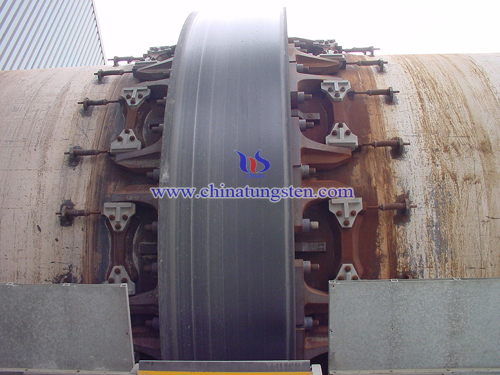Pure Ammonium Paratungstate from Tungsten Scraps
- Details
- Category: Tungsten Information
- Published on Thursday, 10 December 2015 11:05
- Written by xinyi
- Hits: 276
Typical oxidation process of tungsten scraps was modified by the rotary kiln with oxygen burner to increase the oxidation rate of tungsten scraps. Also to accelerate the solubility of solid oxidized products, the hydrothermal reflux method was adapted. By heating tungsten scraps in rotary kiln with oxygen burner at around 900° for 2hrs, the scraps was oxidized completely. Then oxidized products (WO3 and CoWO4) was fully dissolved in the solution of NaOH by hydrothermal reflux method at 150° for 2hrs. The dissolution rate of oxidized products was increased with increasing the reaction temperature and concentration of NaOH. And then CaWO4 and H2WO4 could be generated from the aqueous sodium tungstate solution. Ammonium paratungstate (APT) also could be produced from tungstic acid using by aqueous ammonium solution. The morphologies (cubic and plate types) of APT was controlled by the stirring process of purified solution of ammonium paratungstate.
A Rotary kiln is a pyroprocessing device used to raise materials to a high temperature (calcination) in a continuous process. The kiln is a cylindrical vessel, inclined slightly to the horizontal, which is rotated slowly about its axis. The material to be processed is fed into the upper end of the cylinder. As the kiln rotates, material gradually moves down towards the lower end, and may undergo a certain amount of stirring and mixing. Hot gases pass along the kiln, sometimes in the same direction as the process material (co-current), but usually in the opposite direction (counter-current). The hot gases may be generated in an external furnace, or may be generated by a flame inside the kiln. Such a flame is projected from a burner-pipe (or "firing pipe") which acts like a large bunsen burner. The fuel for this may be gas, oil, pulverized petroleum coke or pulverized coal.


| Tungsten Supplier: Chinatungsten Online www.chinatungsten.com | Tel.: 86 592 5129696; Fax: 86 592 5129797;Email:sales@chinatungsten.com |
| Tungsten News & Prices, 3G Version: http://3g.chinatungsten.com | Molybdenum News & Molybdenum Price: http://news.molybdenum.com.cn |





 sales@chinatungsten.com
sales@chinatungsten.com